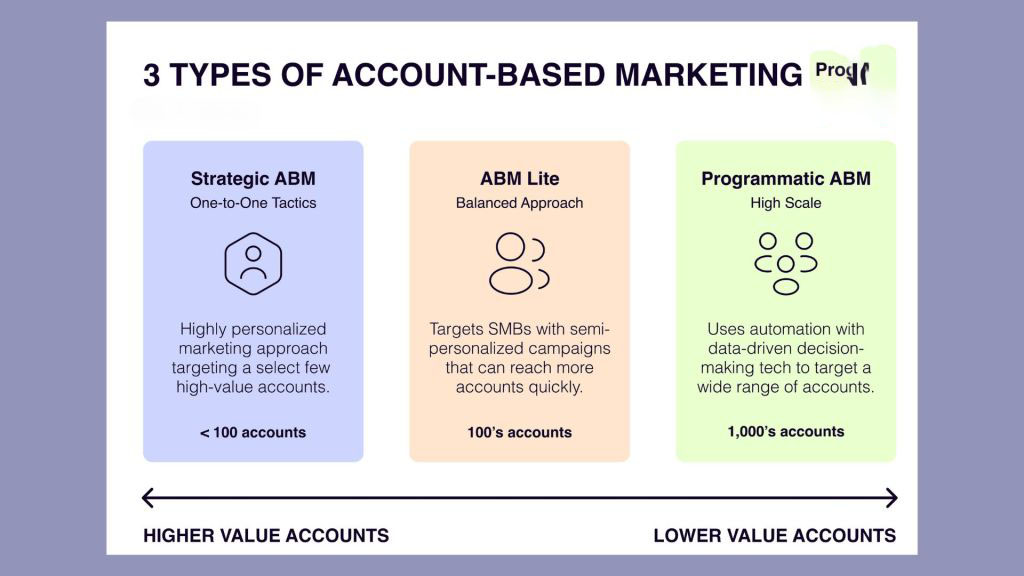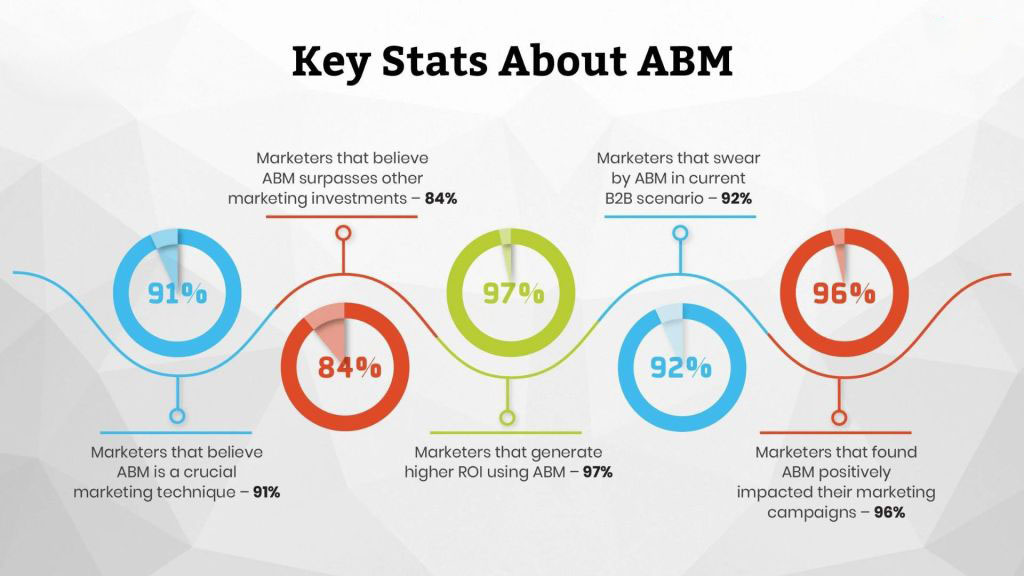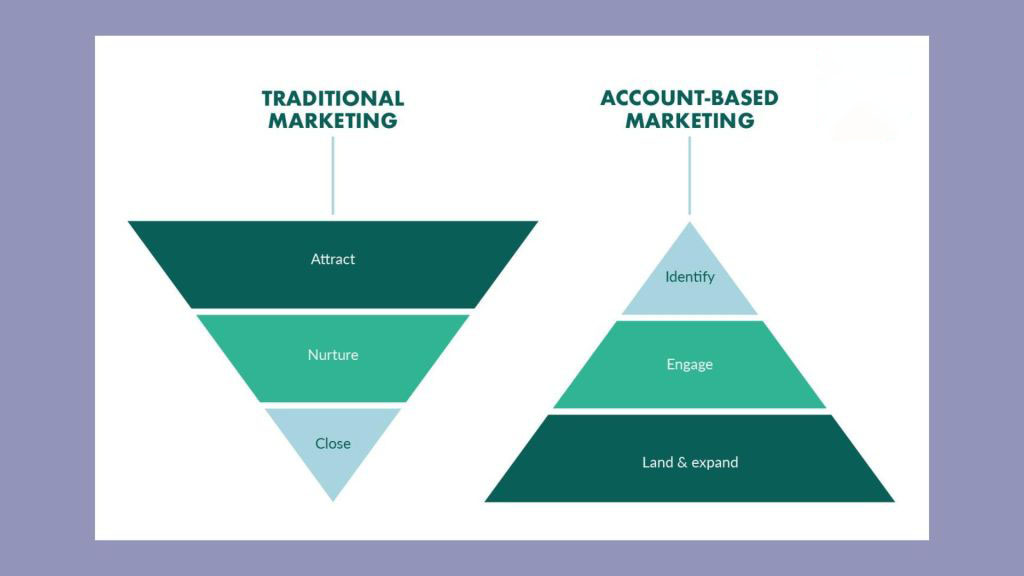Imagine you’re at a networking event, a room full of potential customers. Instead of scattering your business cards hoping someone will connect, you identify a handful of critical decision-makers whose companies perfectly align with your product or service. This targeted approach is the essence of Account-Based Marketing (ABM).
What is Account-Based Marketing (ABM)?
ABM is a strategic marketing tactic that prioritizes a defined set of high-value companies. It shifts the focus from generating a large pool of unqualified leads to cultivating deep, personalized relationships with a select group of ideal customers. By tailoring messaging and outreach efforts to each target account’s specific needs and challenges, ABM fosters more robust engagement, accelerates sales cycles, and ultimately fuels significant business growth.
Why Use Account-Based Marketing (ABM)?
In today’s competitive B2B landscape, traditional marketing methods that cast a wide net can be inefficient and wasteful. ABM offers a laser-focused approach that delivers several compelling benefits:
- Increased ROI: ABM concentrates resources on high-value accounts, maximizing the return on your marketing investment.
- Shorter Sales Cycles: Personalized outreach and content resonate more deeply with target accounts, leading to faster conversions.

- Enhanced Customer Relationships: ABM fosters more profound connections with decision-makers, building trust and loyalty.
- Improved Sales Alignment: Marketing and sales teams work collaboratively to target and engage specific accounts, ensuring a seamless customer journey.
How to Develop a Winning Account-Based Marketing (ABM) Strategy
Building a successful ABM strategy requires a well-defined roadmap. Here are the essential steps involved:
Identify Ideal Customer Profiles (ICPs)
The foundation of any effective ABM program is a clear understanding of your ideal customer. Develop detailed Ideal Customer Profiles (ICPs) that outline the specific characteristics of your target companies.
- Industry: Focus on sectors where your product or service offers the most significant value.
- Company Size: Target companies with the budget and resources to benefit from your offerings.
- Decision-Making Hierarchy: Identify key decision-makers within your target accounts.
- Challenges and Pain Points: Understand the specific problems your ideal customers face.
- Growth Goals and Objectives: Align your solutions with the growth aspirations of your target accounts.
Research and Prioritize Target Accounts
Once you have established your ICPs, leverage market research tools , industry publications, and social media to identify specific companies that align with your ideal customer profile. Create a prioritized list based on potential revenue and growth trajectory that fits your offerings.
Personalize Your Approach

A one-size-fits-all marketing message won’t resonate with high-value accounts. Develop personalized content and outreach strategies for each target account.
- Content Marketing: Produce case studies, white papers, blog posts, and other digital assets that are specifically tailored to the problems of your target accounts.
- Account-Based Advertising: Utilize targeted advertising platforms to reach decision-makers within your target accounts with relevant messaging.
- Direct Outreach: Develop personalized email campaigns, social media interactions, and even phone calls to connect with key contacts at your target accounts.
Orchestrate a Seamless Sales and Marketing Alignment
Effective ABM requires a strong synergy between your marketing and sales teams. Develop a collaborative approach that ensures consistent messaging and a smooth handoff from marketing qualified leads (MQLs) to the sales team.
Measure and Refine
ABM is a continuous endeavor. Monitor your progress and modify your action plan in response to data insights. To gauge the effectiveness of your ABM program, monitor important indicators, including engagement rates, conversion rates, and ROI.
Common Challenges Faced in Account-Based Marketing (ABM)
This section will address the potential hurdles companies might encounter when implementing ABM. Here are some points you could discuss:
Limited Resources: ABM requires dedicated resources for research, content creation, and personalized outreach. Discuss strategies for maximizing efficiency and leveraging marketing automation tools.
Alignment Issues: Ensuring seamless collaboration between marketing and sales teams is crucial for ABM’s success. Discuss strategies for fostering communication and establishing joint goals.
Measuring ROI: Demonstrating the return on investment for ABM can be challenging. Discuss critical metrics to track and strategies for showcasing the value of your ABM program.

Advanced Account-Based Marketing (ABM) Tactics
This section can explore more sophisticated ABM strategies for B2B companies with established ABM programs. Here are some potential areas to cover:
Account-Based Orchestration: Discuss leveraging marketing automation platforms to personalize and automate campaign elements across different channels.
Strategic Partnerships: Explore how partnering with complementary businesses can expand your reach and enhance your ABM efforts.
Customer Advocacy Programs: Highlight the power of leveraging satisfied customers as brand ambassadors to amplify your ABM messaging.
Account-based marketing (ABM) is a potent strategy for successful B2B marketing. It may help you strengthen your customer relationships, accelerate growth, and gain a sizable competitive edge by helping you target the right accounts, personalize your outreach, and coordinate your marketing and sales initiatives.
Ready to explore how OCH can help you develop and implement a winning ABM strategy? Our team of creative digital marketing experts can guide you through the entire process, from identifying ideal customer profiles to crafting personalized campaigns that resonate with your target accounts. Contact OCH today, and let’s start building your ABM success story!



